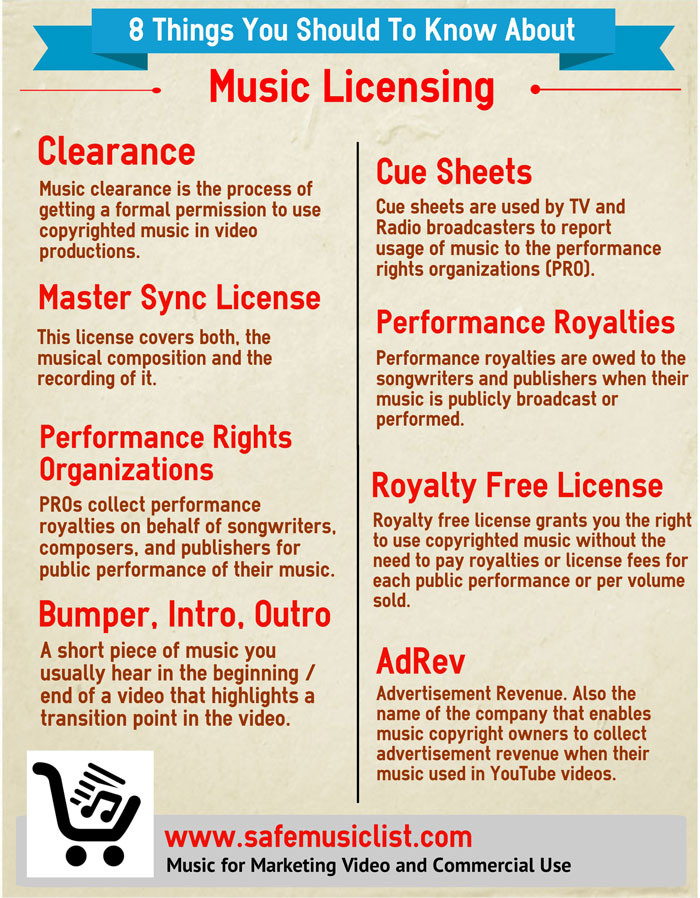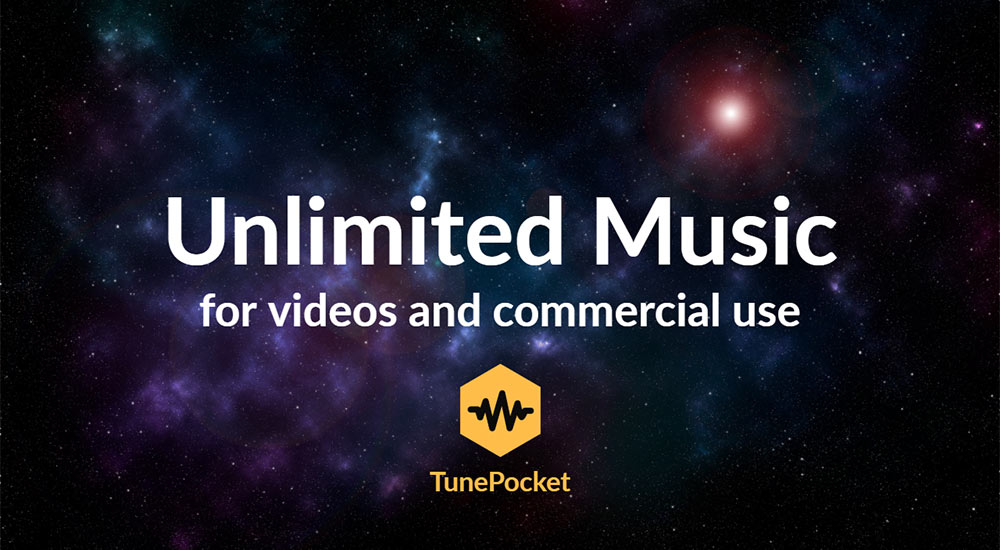8 common music licensing terms you should know if you want to use copyrighted music in marketing videos or for commercial business purpose.
1: Clearance
Music clearance is the process of getting a formal permission to use copyrighted music in video productions.
2: Master Sync License
Normally, if you want to use copyrighted music in your video, you should get two separate licenses – the Sync license that grants you the right to use a particular music composition and the Master license that grants you the right to use the recording of that composition. These days, many independent producers control the publishing rights for their music and can issue a Master Sync license that covers both, the musical composition and the recording of it.
3: Performance Royalties
Performance royalties are owed to the songwriters and publishers when their music is publicly broadcast or performed.
4: Performance Rights Organizations (PRO)
PROs collect performance royalties on behalf of songwriters, composers, and publishers for public performance of their music.
5: Cue Sheets
Cue sheets are used by TV and Radio broadcasters to report usage of music to the PROs.
6: Royalty Free License
Royalty free license grants you the right to use copyrighted music without the need to pay royalties or license fees for each performance or per volume sold. Royalty free license simplifies the music licensing process by removing the need to negotiate licensing fees with the PROs, since, as the name implies, there are no performance royalties to collect.
UPDATE: Many royalty-free music libraries, including Safe Music List are presently offering a mix of PRO and non-PRO music.
If you decide to use a PRO registered music in your video or film, consider this:
The performing rights royalties are normally paid by broadcasters and are NOT the responsibility of video producers, editors or other typical users of production / stock music.
Most broadcasters (TV, radio stations), video sharing platforms like YouTube and Vimeo, and venues like hotels and conference halls already have blanket PRO licenses that cover all PRO registered music, so you don’t need to obtain a separate license on your own.
In case your broadcaster or a venue does not have the license, this will be you responsibility to obtain additional performing rights for the PRO in your country.
Looking for music to use in marketing videos?
Listen to our top 20 best selling royalty free music tracks that appear in many corporate and marketing videos on YouTube and elsewhere.
7: Bumper, Intro, Outro
A short piece of music you usually hear in the beginning / end of a video that highlights a transition point in the video.
8: AdRev
Advertisement Revenue. Also the name of the company that enables music copyright owners to collect advertisement revenue when their music used in YouTube videos.
Making lots of videos?
KNOWING IS BETTER THAN GUESSING
Get short monthly digests of our latest posts, including personalized tips on improving your vlogs and promotional business videos
Related
- Best Places To Download Free Stock Footage
- How To Legally Use Music In Commercial Business Videos
- 5 Must Have Marketing Videos For Any New Business
- How To Convert Your Business Marketing Videos To Vertical For Better Facebook Engagement
- How To Bring Your Vlog From Obscurity To The Top Of YouTube
- 5 Best Christmas Video Ideas For Holiday Business Marketing
- Choosing Music For Business Video? 3 Rules You Can’t Ignore (Infographic)
- How To License Music For Commercial Video (Infographic)
- Choosing Music For Real Estate Video? 3 Rules You Can’t Ignore: Infographic
- 3 Key Elements Of A Successful Real Estate Video (Infographic)




I have never known much about music licensing, and I was curious about how it works. It’s interesting that if you are going to use copyrighted music, you have to get 2 different licenses. It’s great that there are ways for people to use music, and not get in trouble for it.
This was interesting to me as a music producer, singer/songwriter. I have music on YouTube that’s been viewed over 800,000 times and have not received any compensation at all……smh. Thank you for post, this is one reason i love Pinterest.